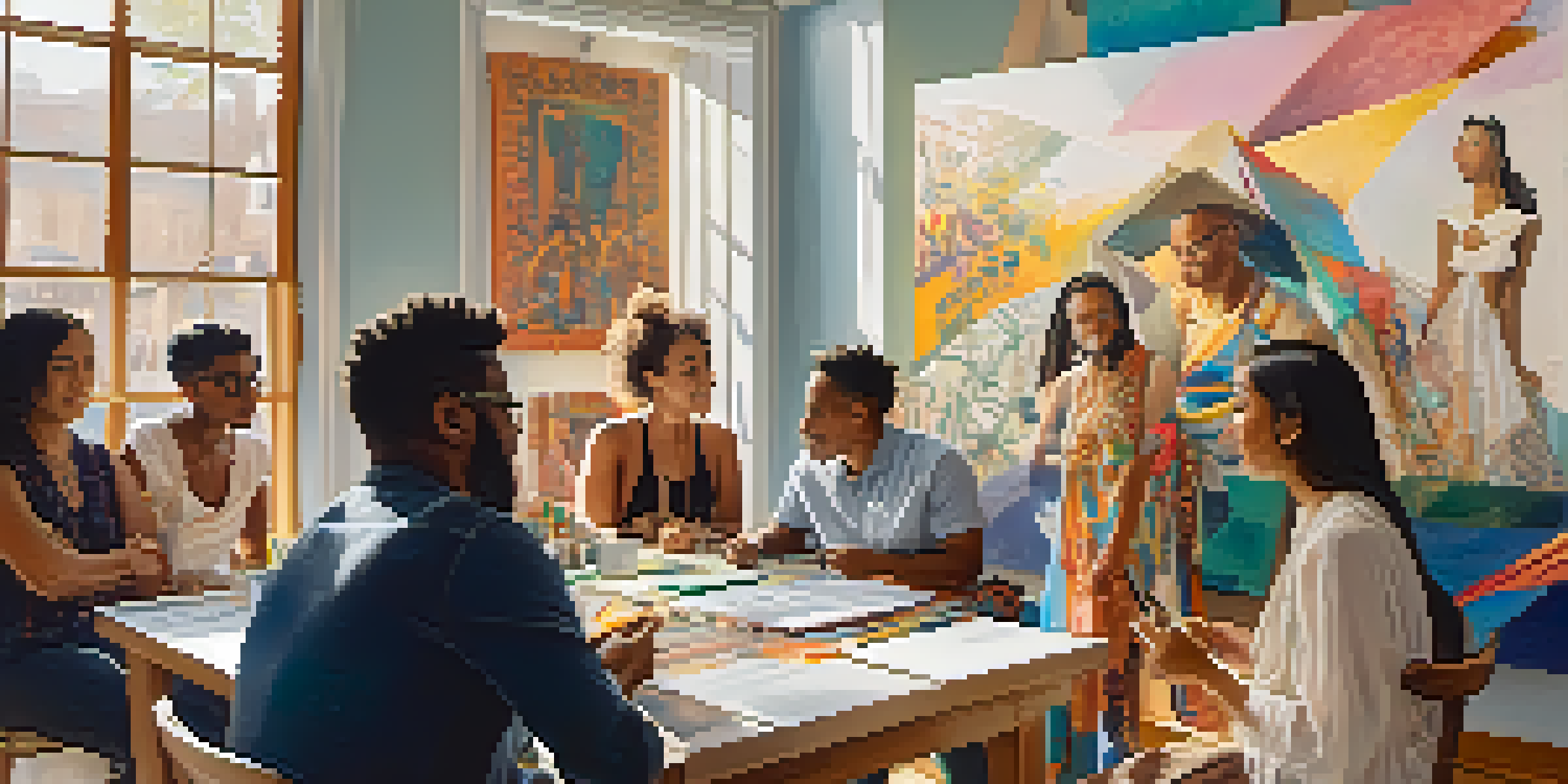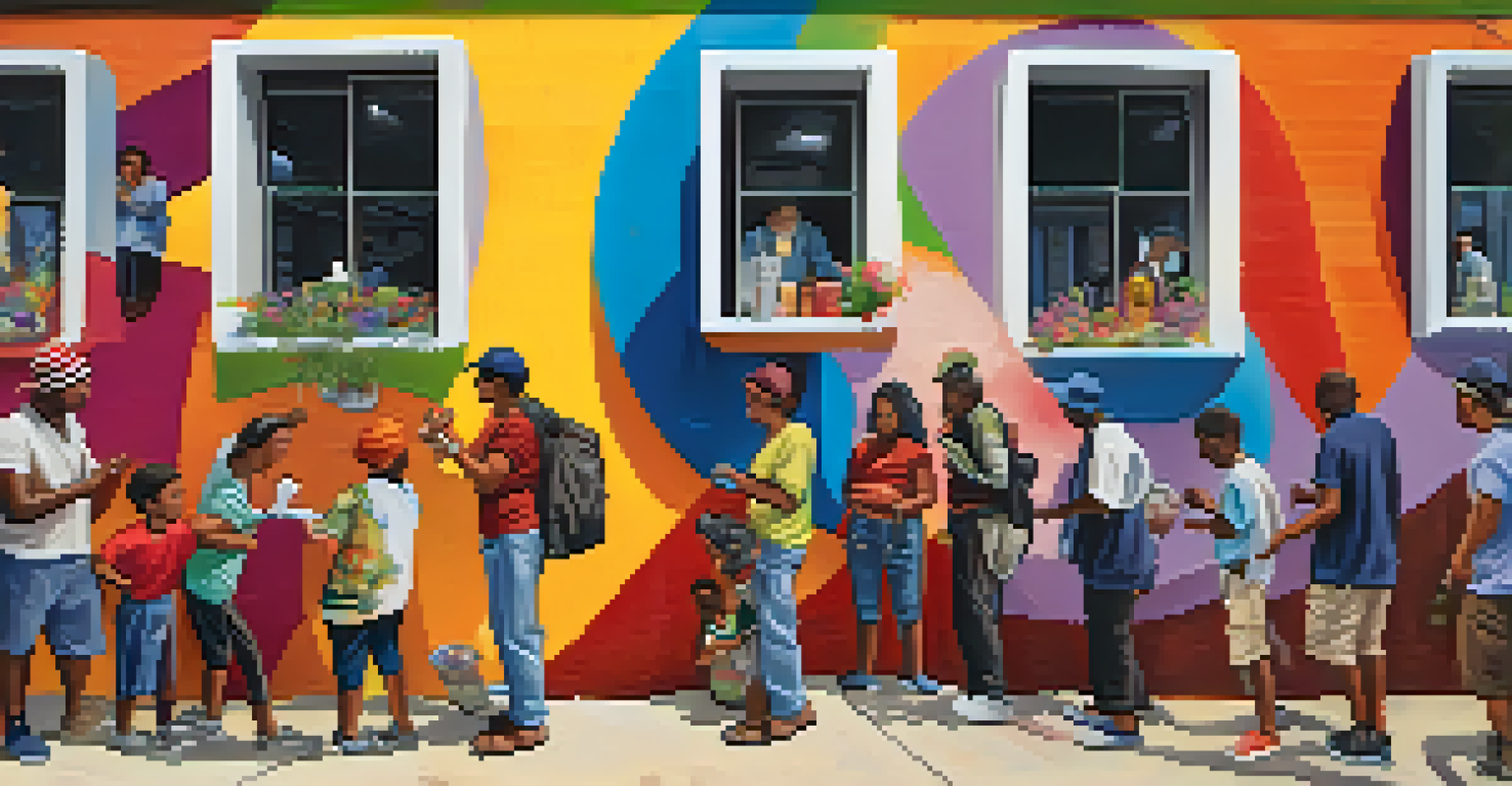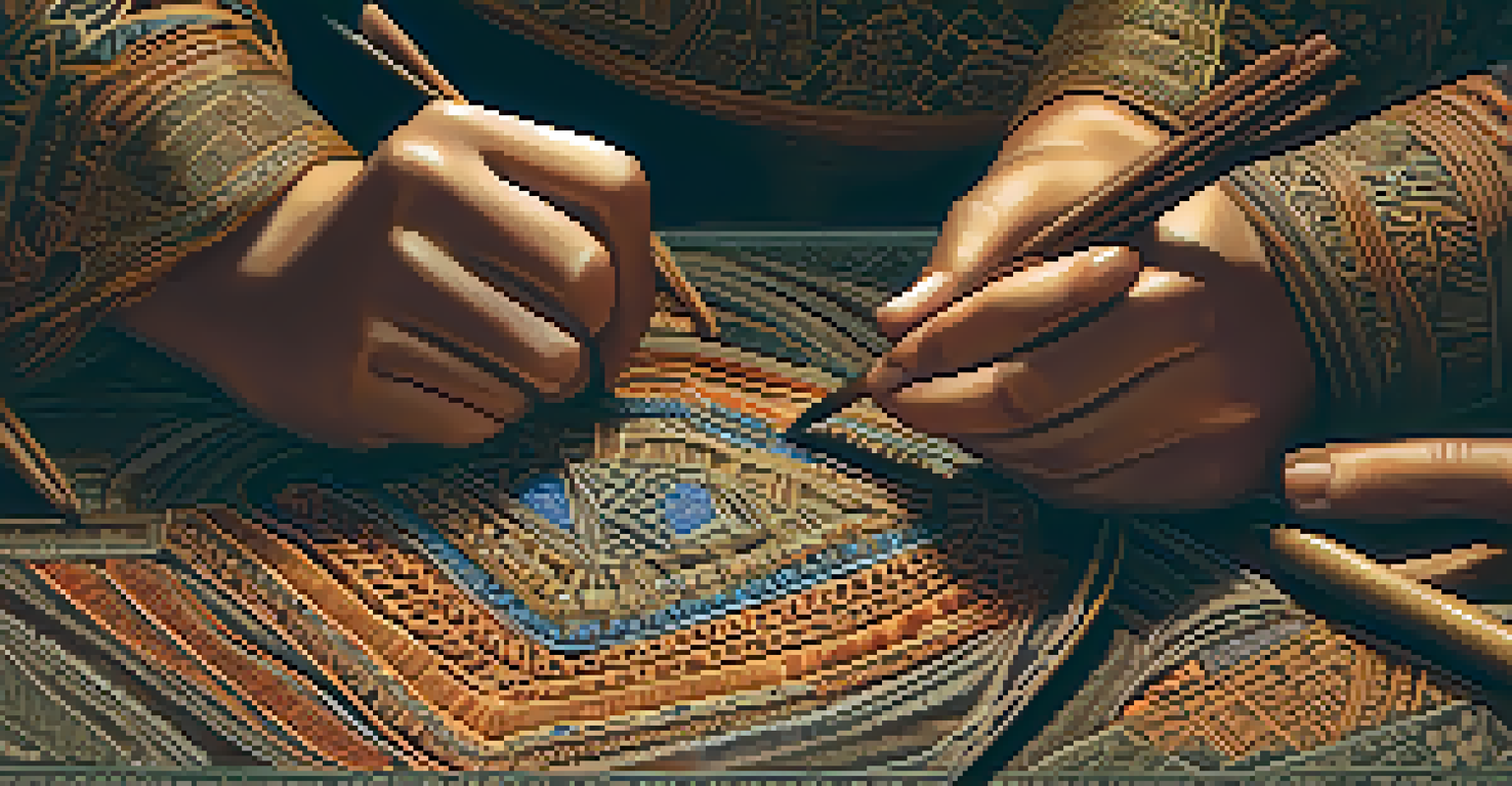The Role of Cultural Consultants in Art Projects

What Are Cultural Consultants and Their Importance?
Cultural consultants are professionals who provide expertise on cultural practices, values, and traditions. They play a crucial role in ensuring that art projects authentically represent the communities they aim to depict. By bridging the gap between artists and different cultures, they help foster understanding and respect.
Art should be an integral part of our lives, and it should come out of the community and reflect the cultural diversity that exists within it.
Their importance cannot be overstated; they guide artists in navigating cultural sensitivities and avoiding misrepresentation. This is particularly vital in a diverse world where art can influence public perception and cultural narratives. Engaging a cultural consultant is like having a knowledgeable guide while exploring uncharted territory.
For example, when an artist wishes to incorporate Indigenous motifs into their work, a cultural consultant can provide insight into the significance of those symbols. This ensures that the final art piece honors the culture rather than appropriating it, promoting a respectful dialogue.
How Cultural Consultants Enhance Artistic Vision
Cultural consultants bring a fresh perspective that can significantly enhance an artist's vision. They provide context and depth, allowing artists to create work that resonates on multiple levels. This collaboration can lead to richer storytelling and more meaningful engagement with audiences.

By understanding the cultural nuances behind certain themes, artists can avoid stereotypes and clichés. This deeper understanding not only enriches the artwork but also invites the audience to connect with the piece on a more personal level. It's like adding a hidden layer to a painting that only reveals itself upon closer inspection.
Cultural Consultants Bridge Gaps
Cultural consultants enhance artistic projects by providing essential insights into cultural practices and values, ensuring respectful representation.
For instance, an artist exploring themes of community might work with a consultant who specializes in local traditions. This partnership can unveil unique stories and practices that inspire the artwork, resulting in a piece that reflects authentic community experiences.
Navigating Cultural Sensitivities with Expertise
Cultural sensitivities can be a tricky terrain for artists, especially when exploring unfamiliar cultures. This is where cultural consultants come into play, helping to navigate potential pitfalls. They ensure that artistic expressions are respectful and inclusive, avoiding cultural appropriation.
Culture is not a luxury; it is a necessity. It is what gives meaning to our lives.
Their expertise can guide artists in understanding which elements of a culture are sacred or off-limits for artistic interpretation. This guidance is essential in creating art that honors rather than exploits cultural heritage. It’s like having a seasoned traveler who knows the local customs and can steer you clear of faux pas.
For example, an artist working on a piece that involves sacred rituals would benefit from a consultant's advice on which aspects to represent and how. This not only protects the integrity of the culture but also elevates the artistic endeavor to a more respectful collaboration.
Fostering Collaboration Between Artists and Communities
Cultural consultants often act as liaisons between artists and the communities they represent. This collaboration creates an opportunity for meaningful dialogue and exchange of ideas. When artists engage directly with communities, the resulting art is often more authentic and resonant.
By involving community voices in the artistic process, consultants help ensure that the final piece reflects a collective narrative rather than a singular vision. This collaboration is akin to a potluck dinner, where everyone contributes their unique dish, resulting in a feast that celebrates diverse flavors.
Collaboration Makes Art Authentic
Engaging communities through cultural consultants fosters a collaborative environment, leading to art that reflects diverse narratives.
For instance, a community art project might involve local residents in brainstorming sessions facilitated by a cultural consultant. This approach not only empowers the community but also enriches the artwork with diverse perspectives that might otherwise be overlooked.
The Impact of Cultural Consultants on Art's Reception
Art that is culturally aware and sensitive tends to be better received by audiences. Cultural consultants help artists create work that resonates with diverse viewers, fostering appreciation and understanding. This positive reception can lead to increased visibility and support for the art.
When a piece is created with thoughtful consideration of cultural contexts, it invites dialogue and reflection. Audiences are more likely to engage with art that feels authentic and respectful of its sources. It’s akin to reading a well-researched book that opens your eyes to new perspectives.
For example, a documentary film that accurately portrays a marginalized community, thanks to the insights of a cultural consultant, is more likely to receive accolades and foster discussions about the issues presented. This highlights the importance of authenticity in the art world.
Challenges Cultural Consultants Face in Art Projects
While cultural consultants play a vital role, they often face significant challenges in their work. One major obstacle is the potential for misunderstandings regarding their role, which can lead to resistance from artists who may feel threatened by external input. Bridging this gap requires patience and effective communication.
Moreover, cultural consultants must navigate their own biases and assumptions while providing guidance. It's essential for them to approach each project with an open mind, ready to learn and adapt. This process can be challenging, much like trying to solve a complex puzzle where each piece represents a different perspective.
Cultural Sensitivity Boosts Reception
Art that is culturally aware tends to resonate better with audiences, promoting appreciation and constructive dialogue.
For instance, a consultant working with a contemporary artist might need to address preconceived notions about traditional practices. By fostering a collaborative environment, they can help the artist see the value in integrating those traditions into their modern work, ultimately enriching the final outcome.
Future Trends in Cultural Consulting for Art Projects
As the art world continues to evolve, the role of cultural consultants is likely to expand. With increasing awareness of cultural representation, more artists are recognizing the importance of working with consultants to ensure their work is respectful and inclusive. This trend reflects a broader societal shift towards valuing diversity and authenticity.
In the future, we might see more interdisciplinary collaborations where cultural consultants work alongside technologists, curators, and community organizers. This holistic approach can lead to innovative art projects that engage audiences in new ways. It’s similar to how a diverse team can generate creative solutions to complex problems.

For example, virtual reality art installations that incorporate cultural storytelling might require input from cultural consultants to ensure accuracy and respect. As technology continues to shape the art landscape, the need for culturally informed perspectives will become increasingly essential in guiding artistic expression.